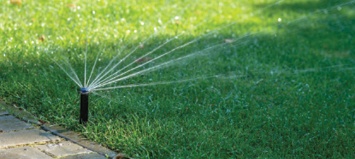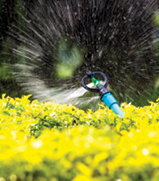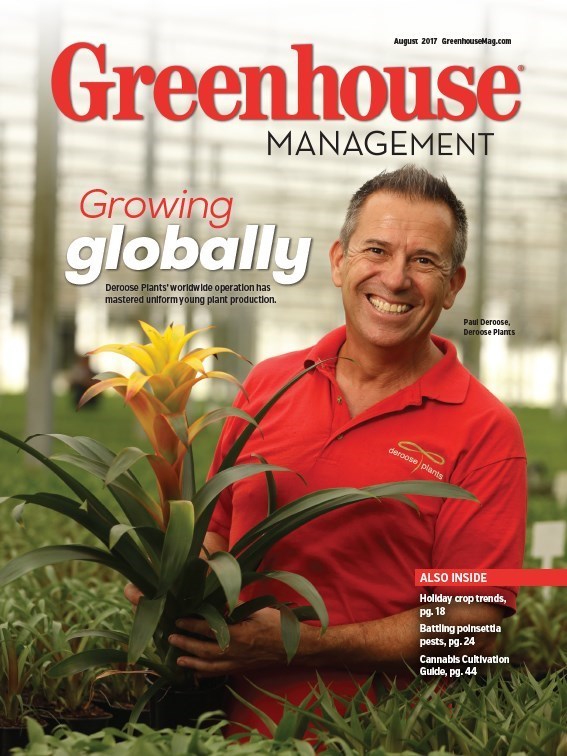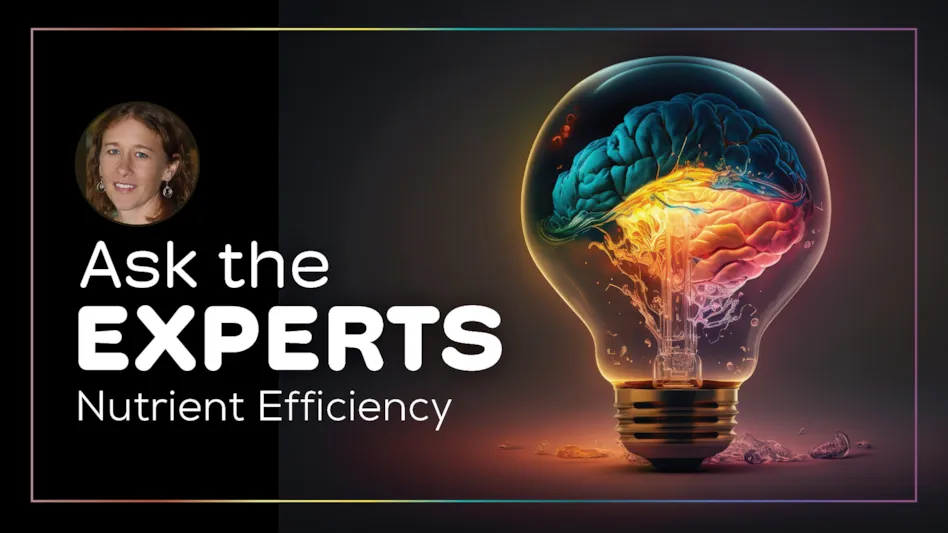
It's heating up out there, and regardless of normal rainfall levels over the past year in drought-stricken states such as Texas and California, water restrictions and conservation efforts won’t be dialing back anytime soon — if ever. As a grower, this means you have no choice but to continue to make adaptations in your business and product selection to weather the weather, so to speak, as well as partner with other industry sectors to control consumer messaging.
In areas where water restrictions have been most tight, many homeowners were scared out of finding new ways to maintain a green landscape and have let their outdoor spaces go. Brown lawns and dead foundation plantings are more common sights these days. However, not all property owners are abiding 100 percent by local water restrictions. I continue to see neighbors of mine in Dallas, Texas running their irrigation systems frequently, and wastefully, outside of water restriction guidelines. Some of the biggest culprits are large properties tucked behind tall privacy hedges; they often run irrigation systems daily. Restrictions be damned. There just aren’t enough code enforcement agents to write tickets and discourage violations, or cities willing to grapple with wealthy property owners. As such, some businesses in areas with water restrictions may not yet feel the full effect of them kicking in.
On that point, irrigation practices amongst growers may not be evolving as quickly as needed either, due to existing irrigation infrastructure or an unwillingness to change processes. Eventually, things will get to a point where none of us can run from the restrictions, or the real need for serious water conservation efforts.
As water-needy lawns continue to shrink, there is space in the market for you to fill that real estate with water-wise perennials, shrubs, and trees. If you’re a grower that has always specialized in drought-tolerant or Mediterranean climate plants, you’ve no doubt worked to make the most of the current water situation and it’s potentially helped your business. However, other growers will tell you that while they may be increasing the quantity of water-wise and succulent plant material in their mix, sales of these products don’t yet make up for losses in sales of more traditional annuals and perennials. Not only that, but some lost customers are simply lost for good.

The water crisis has forced some innovations in automated irrigation control in growing operations, as well as adjustments and improvements to soil mixes to help conserve water. For example, some growers are finding earthworm castings to be a beneficial media amendment for both water conservation and reducing fertilizer inputs. Soilless growing, as a means to better control and conserve water, continues to grow in popularity. But we still have a long way to go.
Plus, I’m still not seeing big investments in water-conserving technology by residential consumers. There are ways to water smart and within water restrictions, but your irrigation system needs to be up to the task. I put my money where my mouth is and renovated my entire home landscape irrigation system to drip and high-efficiency rotary heads where necessary, all controlled with a smart controller and remote app control access.
That said, my clients in the landscape industry continue to bemoan the reality that most residential and commercial property owners still won’t part with the cash necessary to upgrade their systems to use less water, or renovate their existing plant material to more water-wise specimens. This is true even though doing so means they could keep a lusher landscape that also uses less water. I suspect property owners won’t make the big shift until they’re mandated to do so — same for some growers.
In 2016, Texas created the Lawn & Garden Water Smart Tax Holiday during Memorial Day weekend, to encourage consumers to go water-wise in their landscapes. During the tax holiday, shoppers can purchase certain water-saving products tax free. Any product with a WaterSense label or logo is on the list for both personal and business use. Additional water-conserving products without a WaterSense label that are used or planted for conserving or retaining groundwater, recharging water tables, or decreasing ambient air temperature, can also be purchased tax free for residential use. If you have a program such as this in your state, you should help promote it.
The Texas Nursery and Landscape Association has also developed a new Texas Water Smart Certification, which can be obtained by current TNLA certification holders, to help consumers identify professionals who can help them specifically with water conservation needs in their landscape. I talk about this certification and how businesses can market the importance of water conservation in this video: bit.ly/2uRDYUQ
Be sure to check with your state’s industry organizations to take advantage of similar professional development and marketing opportunities.
As green industry businesses, we must work more assertively to educate the end consumer about strategies they can and should employ to keep their landscapes beautiful and healthy, while managing their water wisely. The future of our industry depends on it. While you might not be used to getting involved with retail- and landscape-related marketing campaigns, customers of these industry segments are ultimately your end customer. Supporting your industry customers with group-effort marketing campaigns that help landscapers and homeowners navigate water restrictions is in your company’s best interest.

Explore the August 2017 Issue
Check out more from this issue and find you next story to read.
Latest from Greenhouse Management
- Passion grows progress
- Registration opens for Darwin Perennials Day
- U.S. Department of Labor finalizes farmworker protection rule
- Azo Root is now available from Harrell’s
- Bidens ferulifolia Blazing Glory
- Rob Hanifin joins Ridder North America as product specialist for climate screens
- The importance of measuring light
- Spigelia marilandica





